
Sign in
Don't have an account with us? Sign up using the form below and get some free bonuses!

We've all known people who've made goals at the beginning of a new year, but what about New Year's resolutions for parenting, specifically? Should we be making them? If so, what might they look like?

First, some science. Do New Year's Resolutions even work according to doctors who've studied people's habits? According to this video, they absolutely do---when they're done right. And they're more likely to work when we make them at the beginning of the new year! Interesting, isn't it?
With that out of the way, let's move forward.
Indeed, it's a bit unconventional to have parenting goals as New Year's resolutions. According to GoSkills.com, some of the most common New Year's resolutions are these:
Those are all well and good, but I wonder about the specifics of spending more time with family and friends. For those of us with kids, what should that look like, exactly?
If you use the SMART goals model, it means goals should be Specific, Measurable, Achievable, Realistic, and Timely. Although people often use this model for business, it's absolutely possible to use it at home, too, for parenting goals. The more specific we are, the better (although goals relating to emotions can go either way since they address different needs).
What is your purpose as Mom or Dad? Do you want to raise a baby with respect, and help that baby learn social, emotional, and academic skills as he or she moves through childhood? What is discipline to you---and how can you practice what you preach? What will help your child grow into a happy and healthy adult? Is there anything you can do now to foster a lifelong and positive relationship? Are your parenting goals about yourself as a parent or about your child?
All of these questions can prompt ideas for your parenting goals.
Here, some parenting writers we know share resolutions they've made to "up" their family game. I love how they all approach parenting goals from different angles, but they all have one theme in common: connection.
 I'm striving to compartmentalize more. Last year, I snuck in work whenever I could while raising and homeschooling my child. That often left me feeling like I was rarely fully with her or fully working. So, I'm dedicating specific time each day to working. When I'm done, I can walk away knowing it had my full attention and I don't need to worry about my to-do list when I'm with my child. She'll get more of Mama back this way and I'll be much more engaged with her.
I'm striving to compartmentalize more. Last year, I snuck in work whenever I could while raising and homeschooling my child. That often left me feeling like I was rarely fully with her or fully working. So, I'm dedicating specific time each day to working. When I'm done, I can walk away knowing it had my full attention and I don't need to worry about my to-do list when I'm with my child. She'll get more of Mama back this way and I'll be much more engaged with her.
"My resolution...is to be a well balanced mom. As I welcome my twins into the world, I  resolve myself to do everything I can to provide a positive, safe environment for them. This includes taking care of my own physical and mental wellbeing, prioritizing my marriage and accepting help from friends and family. Most importantly, this means not beating myself up over small things and realizing that while I may not be a perfect mother, I am good enough."
resolve myself to do everything I can to provide a positive, safe environment for them. This includes taking care of my own physical and mental wellbeing, prioritizing my marriage and accepting help from friends and family. Most importantly, this means not beating myself up over small things and realizing that while I may not be a perfect mother, I am good enough."
 "Setting New Year's resolutions or intentions are super important for our growth as parents. When we set goals or intentions for the new year, a couple amazing things happen. One we stop and reflect on the past year, the positive AND the negative, and we can learn from our past parenting. And two, setting goals going forward helps us to be more intentional in our parenting and family time. This past year, I set a few family goals. I worked on getting us to sit down at the table for dinner more often. And I helped one of my 'creative' kids on building tidying habits. Neither did I do perfectly, but setting the goals put me closer to where I want to be as a parent!"
"Setting New Year's resolutions or intentions are super important for our growth as parents. When we set goals or intentions for the new year, a couple amazing things happen. One we stop and reflect on the past year, the positive AND the negative, and we can learn from our past parenting. And two, setting goals going forward helps us to be more intentional in our parenting and family time. This past year, I set a few family goals. I worked on getting us to sit down at the table for dinner more often. And I helped one of my 'creative' kids on building tidying habits. Neither did I do perfectly, but setting the goals put me closer to where I want to be as a parent!"
"One of the things I found when becoming a parent is that all my time and energy tends to be devoted to caring for my child, myself or the house. This has left little time for maintaining the friendships in my life. So this year my New Year's Resolution is to send my nearest and
dearest birthday cards on their birthday. I can't spend as much time with them as I used to but I still want them to know that I care about them and I am thinking of them."
"...I think if I were to change anything about this past year, it would be to be more intentional about teaching my children about God. We go to church regularly and pray at meals, but I want to make it a habit of talking to my children about our faith outside of church and start conversations about faith on a regular basis. I want to do as Deuteronomy 6:6-7 says 'These commandments that I give you today are to be on your hearts. Impress them on your children. Talk about them when you sit at home and when you walk along the road, when you lie down and when you get up.'"
Well, yes. They are. You can plan for and make change anytime you want to. There's certainly never a bad time to become a better parent. There are many positive parenting books, parenting educators who offer consultations, positive parenting Facebook groups, and therapists available to help you every step of the way. We're here for you!
We all know parenting isn't always easy. It takes focus and patience daily; it's a job like no other. But how you do as a parent will likely matter more than almost anything else you do in life (and parenting absolutely should be fun more often than it's not). We're all learning; we're safe to seek helpful advice when we need it. Our families need us and we love them dearly. We really want to do our best for them however we can.
Doing our best for them might mean setting big goals, like breaking a screen addiction or another habit that's not serving our families or ourselves well. Or it might mean making small changes, like making a point to call Grandma twice a week instead of just once. No matter your goal (and it's okay to have more than one), remember that you're the one setting it, so you get to decide if it's working for you after you start.
Do give the actions that support your parenting goals some time to stick, however. After all, it takes between 18 and 254 days to form a new habit, and on average 66 days for a new behavior to become automatic (source). Once you allow enough time to try it, it's perfectly fine to tweak whatever you need to based on what's working for your family.
Teaching children how to protect the Earth often isn't at the forefront of our minds. We recycle, of course, and we're generally good citizens. In all practicality, however, we're often busy...making lunch. Managing our children's bedtimes. Living life.
I don't write that judgmentally. I'm guilty of it, too.
As part of conscious parenting, however, it's imperative that we do teach kids why we need to protect the Earth. Conscious parenting and salvaging what we can of the planet aren't mutually exclusive. We have a moral obligation to not only teach children how to be kind to other humans, but also to show them how to nurture the global home they share.
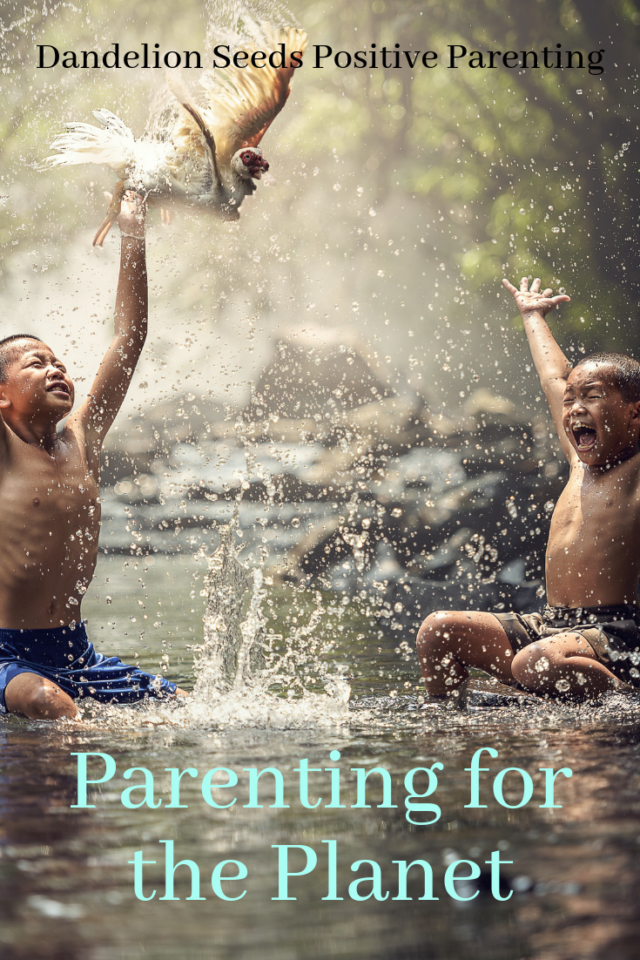
We shouldn't just teach kids about the implications of deforestation or melting ice caps, of course ---rather, they need to know about all the myriad factors that play into the future of this "pale blue dot" we call home.
However, it feels a bit overwhelming to have that responsibility on our shoulders, doesn't it?
It is overwhelming to protect the Earth, much less teach little kids about it. I'm not minimizing the enormity of the task. Fortunately, as individuals, we're not supposed to carry heavy burdens alone---especially seemingly insurmountable ones like climate change. Positively altering our world is going to take work from every single one of us as a global community. What matters is that we're doing our part.
There's always something we can do to protect the Earth. Here are three ways that work well as we parent our children: Teach Them, Show Them, and Lead Them.
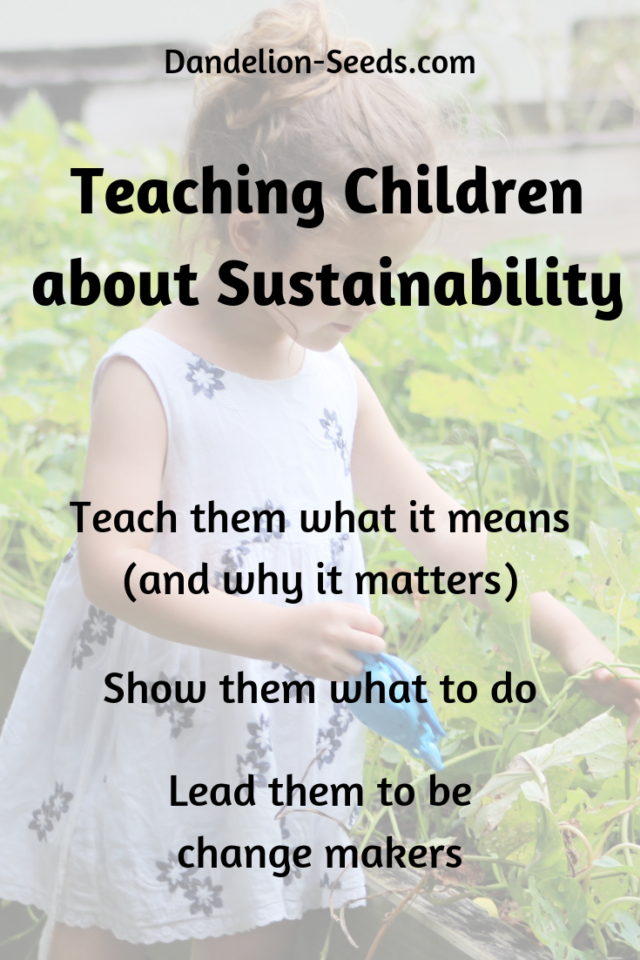
In addition to modeling for your kids all the ways you protect the Earth, challenge them to find ways to be change makers themselves. See what they come up with. Here are a few examples:

birthday streamers or decorations, wrapping paper or ribbons, take a single "day in the life" and see what you can reuse again another day. I never realized that I'd inherit my great grandmother's habit of saying, "Don't tear the wrapping paper---we'll use it again next year!"---but here I am. (I plan to phase out wrapping paper entirely once what we've been reusing no longer holds together.) Encourage your children to challenge their friends to nix single use items in their homes, too. Frame it as an ongoing scavenger hunt. Every day holds opportunities to rethink that which we used to consider disposable.

Solar panels and electric cars aren't feasible for everyone, and we can't always choose whether our homes are powered by wind turbines. However, until more of those things are commonplace, you can write letters with your children. Make phone calls. Model to your children that communication matters---because their future on this planet matters.
There are so many ways to weave this topic into your daily conversations. Although it's wonderful to have sit-down discussions about how to protect the Earth, it doesn't need to be complicated or heavy-handed, particularly with children who are highly sensitive. Adapt your message to suit your child's ability to process the information thoughtfully and without fear mongering. Starting small is great, particularly for small children. No child is too young to listen. It's all about planting the proverbial seed. It will grow if you let it.
Awareness and understanding go a long way; they're how kids establish their belief systems about what's important.
Here are some simple and effective ways you can teach young children about how to protect the Earth:
What you can say to your child: "I'm turning off the bedroom lights because no one's in there. That's how we save energy. Saving energy helps protect the Earth and everyone who lives on it."
 items to break down. A single plastic bag can take anywhere from 10-1000 years; some studies argue that they never fully decompose. What else can you research together?
items to break down. A single plastic bag can take anywhere from 10-1000 years; some studies argue that they never fully decompose. What else can you research together?What you can say to your child: "We're walking to the library today so we don't use the fuel that's in our car. Saving fuel helps protect the Earth by reducing fumes and protecting the planet's natural resources."
Talking goes a long way for kids. If they don't hear important messages from you, what would they know to look for (or to avoid) in society as they grow up?
It's important for kids to know that they're not too young to care; not too young to help.
Have you heard of Greta Thunberg, a 17-year-old girl from Sweden? She's a climate activist who's inspired marches for young people around the world. She completed an incredible 15-day, 3,000-mile (4,800km) voyage on a carbon-neutral boat across the Atlantic to bring awareness to climate change. She spoke at the United Nations Climate Summit in September 2019. Here's her very compelling speech to the Assemblée Nationale:
Greta's work is inspiring and wonderful, yet she's not the only one who's doing good work to protect the Earth. Young activists are doing important climate work all over the world. Share their stories with your children.
Watch your children's reactions to others' work to learn which elements of protecting our planet speak to their hearts. Then, foster those things. Do they love marine animals? What about their favorite forest creatures? Do your kids enjoy hiking, playing outside in good weather, or boating with Grandpa? See what other people are doing to make enjoying those things possible for your child. Tie those things into your discussions. They're specific. They're memorable.
As with all topics, you'll be more likely to succeed at teaching your message about sustainability if your child feels emotionally compelled to learn. Just like some kids enjoy math for the sake of numbers and others don't care about math until they discover physics, pay attention to what resonates with your child. Show them what others are doing in an area that inspires them. Read books together about ways your children can help protect the Earth (afflinks). Check them out from your local library if you can.
Be it a cigarette butt on the pavement, smoke spewing from a manufacturing facility, or someone acting irresponsibly towards our planet in any way, it's perfectly okay to point it out and say, "Yuck." Explain why it's off-putting.
What you can say to your child: "I don't like it when people leave their trash near the lake. It's dirty and can make the fish and animals here very sick. I want people to do better." Bonus points: pick up the trash and take it to the nearest bin. Pack an eco-friendly hand sanitizer to keep with you if you're concerned about cleanliness.
Kids need to know that adults outside your home care about sustainability, too---lest they feel as overwhelmed as we do. It's hard to feel like an activist in isolation. Show them they're not alone. Find role models they admire (famous or not) and share with them what those people are doing.
Raffi, the beloved children's troubadour and creator of his namesake Foundation for Child Honouring, wrote two wonderful new songs about the climate emergency ("Young People Marching – for Greta Thunberg" and "Do We Love Enough"). Here's his press release. You can stream the songs from here.
I'd love to say "Show kids that we've got this." Although I can't do that, I'll write, "Show them that we're working on it."
The normal order of things is for them to outlive us on a safe and healthy planet.
We can't force kids to be stewards of the Earth; it's our job as conscious parents to model these things for them. They'll follow our lead. As a bonus, the more you instill your messages in your kids, the more they'll hold you accountable, too. Your actions will become their actions as they grow up. They're paying attention now.
"Another day is imminent. Another world is possible." -- Raffi Cavoukian
Sarah R. Moore is an internationally published writer and the founder of Dandelion Seeds Positive Parenting. You can follow her on Facebook, Pinterest, and Instagram. She’s currently worldschooling her family. Her glass is half full.
Raffi's Child Honouring course: Parenting for a Better World
One morning not long ago, I was about to attempt to fix a clogged drain in my shower. With minimal enthusiasm for that task, however, I opted to check my Instagram messages before starting. Much to my surprise, I had received a note from Raffi Cavoukian, otherwise known as Raffi. He was once called "the most popular children's singer in the English-Speaking world" (source: Washington Post). My child serenades me with his "Baby Beluga" song daily. Yeah, reading his message beat unclogging the drain by a long shot.
In his message, he graciously asked that I consider taking his course from the Raffi Foundation for Child Honouring.
I didn't know much about the course going into it, but I expected it would be good if it had his name on it. Frankly, however, for the affordable price compared to many gentle parenting certification programs, I wondered if the content would have enough depth. Still, I was intrigued. I signed up on the spot.
Let me cut to the chase.
It blew me away. Here's the short version of why it did. (I'll gladly provide the long version to anyone who's interested.)

I didn't drop the "I've read 50 books" line above to impress you with my reading skills. I share it because I'm no stranger to research. Honestly, I've had to cobble together a whole lot of information from a broad range of resources to solidify the parenting philosophies about which I write. I study because I care not only about my own child, but also about every single child on the planet. I passionately want the world to care for them well. That means you. And me. All of us.
Raffi's Child Honouring course positively thrilled my brain. It offers so much rock solid content from so many highly reputable sources! The course had me at Dr. Gordon Neufield; and the myriad of other sources like him are equally impressive. It even includes relevant TED Talks, such as this one by Raffi himself. These are just at the tip of this wonderful iceberg of knowledge.
One particular TED Talk about the importance of community building was so moving it made me tear up, and I don't cry easily.
The way the information is presented is entirely engaging. With respect to every online training module I've taken in 25 years of professional experience, this was the best format I've seen. The evidence-based content was spot on. It included exactly the right amount of depth for each topic. If I wanted to learn more, additional resources were available. Moreover, the formats in which the course presents the information vary in the most delightful way. It doesn't allow for "zoning out"---and I had no desire to do so, regardless.
I'd gladly trade many of the best parenting books I've read for this single, comprehensive course. I don't suggest that lightly.
The course covers the following Child Honouring principles:

These principles stem from Raffi's Covenant for Honouring Children.
Of course I realize that everything in the world impacts our children. It has to. Still, I confess that previously, certain concepts hadn't naturally dovetailed into my gentle parenting mindset as a writer and change maker. For example, I'd not spent much time thinking about the organization of corporate leadership as it relates to our children's daily lives. His course spelled out the connection in an incredibly thought provoking way. More than just spelling it out, though, the course tells us what we can do about it. I feel immense gratitude to Raffi and his team of experts for including such comprehensive and incredibly pertinent content.
I want to be clear that this course is not just for people like me. Sure, I'm a parenting writer and a mother. However, the course is also for moms who aren't parenting writers. And dads. And educators and businesspeople. In short, I'd suggest it for everyone who breathes air. We all contribute to the world of children.
If you've read anything I've written elsewhere, you know I write about that which speaks to my heart---even topics that some would say are taboo for a gentle parenting writer (for instance, my articles about racism, homelessness, and global sustainability). Raffi's course is not a parenting course about how to change diapers. This is a course about how to change the world. It spoke to my heart strongly.
Raffi's Child Honouring course covers many of the topics that really matter. Within the modules I noted above, you'll hear about kids and the media (a hot topic for sure!), how to change that which has become "standard" in society even when it's to the detriment of future generations, and so much more of the real work of changing life for the better. The information isn't purely cerebral; it's downright practical and actionable.
I like to think of myself as a very socially conscious person. Even so, wow---I have some areas to develop in my own life. This is hard, personal work that involves changing habits, and in some cases, habits we didn't even realize we had. This course lit a fire in my belly to live differently. To live better. I'm different than I was prior to taking it; I'd like to think, better.
This was entirely unexpected, but when I mentioned to my six year old that I was going to take an online class about parenting (I simplified it for her), she asked if she could take it with me. Now, our family is very light on screen usage, and even more so for my child.
My inclination was to say no because of that, but then I asked myself, "Should a child know about Child Honouring?" Of course she should. So, we paced our viewing to an hour or so, every

other day. I watched some of the content I wasn't sure would be age appropriate on my own time. The parts she did watch, she loved. She asked for more.
One of the most surprising things that came of it was the depth of some of the discussions we had after watching the videos together. We've covered all the topics before, but the course was the impetus for her really internalizing some of the concepts. Case in point: we're a pretty environmentally conscious family. Still, after her birthday, she passionately insisted that we save the streamers from her party to use again another year "...because Raffi said it's important to reuse things whenever possible and not throw them away." (She must've forgotten that we'd already used the streamers for her two prior birthdays, but still, I was impressed.)
It's a tricky balance trying to model respect for all parents, but it's also important that I plant the seeds for her to become a change maker, herself. I love the discussions that are coming out of having involved her.
Children deserve to know how they should expect to be treated.
You can sign up for Raffi's Child Honouring course here. I want to be clear: I get nothing from this. It's not an affiliate link. I simply see a need for the world to internalize his critically important messages, so I'm sharing my thoughts here in this forum.
Throughout much of the training, I caught myself thinking, "The world needs more of Raffi." As I continued to reflect on that, however, I realized something different. More than needing more Raffi, the world needs parents, caregivers, and entire communities to commit themselves to living the messages he shares in this course. Imagine a world that's better not only for his influence, but even more so, for your influence, as you embody the Child Honouring principles---and model them for the next generation.
After all, we're parenting for a better world, aren't we?
Bedtime stories: and how I accidentally made our bedtime routine easier.
Some of the best things were invented accidentally: chocolate chip cookies, the Slinky, and even pacemakers, for example. (Wow!)
One special night during our standard bedtime routine, I accidentally invented a magical pillowcase. My then- four-year-old child was nestling down after her bedtime story, and suddenly didn't want her blanket. Or a sheet. She wanted something different: in her words, "just a little blanket to match my little body, but a light one." Fumbling through my linen closet to see what we had, I grabbed a king-sized pillowcase. I brought it to her and it was exactly the size she had in mind.
Well, ummmm...of course I did! My answer was obviously yes, and with that, her smile was brighter than all the stars in the sky. It was far more magical than the pillowcase.
Even now that she's almost six, she still sleeps with her magical pillowcase every night after bedtime stories. Knowing that she's holding a pillowcase full of my love has made bedtime a peaceful and happy time. She still asks about the hugs, snuggles, and kisses. They're always in there, of course. It's the kind of sweetness that makes me fall in love with her all over again.
Good sleep habits are important, as everyone knows (and as the National Sleep Foundation reminds us, too). Fortunately, there are many gentle ways, and effective sleep routines, to 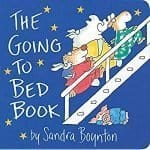 promote hitting the hay. We've used the same routine, plus or minus some tweaks, since she was two. She's almost six now.
promote hitting the hay. We've used the same routine, plus or minus some tweaks, since she was two. She's almost six now.
Our bedtime routine takes 30 to 60 minutes. I plan for the long version and that reduces my anxiety about what I "need to get done" afterwards.
After dinner, even now that my child is older, I carry her upstairs. (Yes, many would say she's too big for this, but I'll do it as long as my body lets me and she wants me to do it.) She puts on her jammies, we say prayers and sing lullabies and brush teeth and go potty. We do the steps in the same order every night, and I conclude with a special saying about love that I've told her every night since she was born.
(afflinks)
 asleep feeling connected and loved? It's four stories in one, so we pick and choose depending how much time she needs to wind down.
asleep feeling connected and loved? It's four stories in one, so we pick and choose depending how much time she needs to wind down. understanding.
understanding.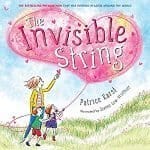 separation day or night, including the times I haven't stayed in the room for my child to sleep. She knows we're connected even if I'm not physically there.
separation day or night, including the times I haven't stayed in the room for my child to sleep. She knows we're connected even if I'm not physically there.Once we're done with the other steps, I crawl under the covers with her and we talk about 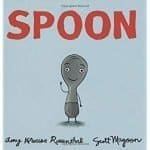 whatever she wants to for about 15 minutes. I often ask her the three questions that I've written about previously. Then she gets into what she calls her "sleeping position." We say "Night night, I love you, sweet dreams" several times at her request. I give her a hug and a kiss, then out the door I go. She falls asleep on her own a couple of minutes thereafter.
whatever she wants to for about 15 minutes. I often ask her the three questions that I've written about previously. Then she gets into what she calls her "sleeping position." We say "Night night, I love you, sweet dreams" several times at her request. I give her a hug and a kiss, then out the door I go. She falls asleep on her own a couple of minutes thereafter.
If she can't sleep, she calls me, usually for "one more question." I come back, answer her question, and give her an extra hug and kiss. Repeating that part of the bedtime routine, when necessary, is very calming for her. She trusts that I'll always return if she needs me. Reading a book (usually from the aforementioned list of bedtime stories) is a great activity to help my child relax. We repeat them because a routine is, well, routine.
Watching TV is what my husband does to wind down. My child and I can't look at big screens for at least a couple of hours before bed. It's just too stimulating for us. Bedtime baths don't work for 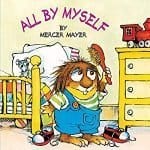 my child, either---also too stimulating. Some people listen to music to wind down. Not us, for the same reason (plus, it keeps "playing" mentally and causes trouble falling asleep). I remember not being able to "count sheep" when I was little---they just kept jumping, and I didn't know how to "turn them off." 🙂 A lullaby and bedtime story are enough for us.
my child, either---also too stimulating. Some people listen to music to wind down. Not us, for the same reason (plus, it keeps "playing" mentally and causes trouble falling asleep). I remember not being able to "count sheep" when I was little---they just kept jumping, and I didn't know how to "turn them off." 🙂 A lullaby and bedtime story are enough for us.
Some people find that playful roughhousing with their kids helps them relax, but that's not our story. I absolutely will be upbeat and loving, and in a calm way, playful. Positive connection of any kind makes for a very good bedtime routine.
Call us sensitive people because, well, we are. Calm is a good thing for us.
Creating a bedtime routine that promotes good sleep habits, in a safe and loving environment, helps reduce sleep problems now and down the road. Know what's developmentally normal, too---some kids, especially babies, naturally wake in the middle of the night.
Want to know something? I'm an adult and I wake up at night, too. I'd stay asleep if I could and suspect the same is true for my child. As adults, we never know when a child has a growing pain, an impending illness, a growth spurt, a developmental leap, or a jolting dream that's hard to separate from reality. Kids wake up for lots of completely valid reasons.
A child learns to sleep one way or another; and my parenting style is to respond to my child whenever she needs me. I don't write that judgmentally; I share it to let you know you're not alone if you're doing that and getting pushback from anyone. Nighttime parenting is parenting, too.
May everyone in your family have sweet dreams tonight!
Do something good when you shop with us! Your purchases help us support important charity work around the world.
Click Here
Click here to jump straight to our recommendations for traveling with kids.
Traveling with kids is one of the most important gifts you can give them. By taking your children with you on a trip, you communicate that they’re important and that you value their company. Moreover, travel is beneficial for their developing brains. Traveling with your kids triggers a neurochemical reaction that reduces stress and allows them to refuel emotionally*. It offers an ‘enriched’ environment because everything is new and different, which results in enhanced sensory, cognitive, and motor stimulation**.
But just because it’s important, doesn’t mean it’s easy. Having a well thought out game plan for road trips, flights, and train trips goes a long way to keeping your kids occupied and happy. Plus, time spent traveling is a great environment for learning rather than just "zoning out."
Since your child can't fly the plane himself (nope, no way), we’ve found the next best thing to entertain him: the top five types of travel products that you need for your next trip. We’ve specifically selected practical and inexpensive items that will keep your child entertained for longer periods of time and promote creative thinking for a variety of age ranges.
Our list has something for everyone. It’s a collection of the best travel toys, activities, games, and crafts to keep your kids busy while stimulating their creativity. Whether you’re heading out on a road trip, taking a long-haul flight, or preparing for a train trip, you’ll find some great options for preschoolers, grade school children, and tweens.
When you consider which travel products to pack, you want to consider the following:
Expert tip: It’s a good idea to keep travel toys packed away in a box at home so that when it’s time to take a trip, the products will seem ‘new’ and will have fresh appeal. It also helps to have a couple of new items for each journey that a child can unwrap when you need a distraction, buy some time, or avoid a meltdown.
There are five types of products to consider when planning your next vacation with the kids. The items we’ve listed are designed to encourage creativity and learning, as well as keeping your children occupied for long trips.
Coloring books and crayons were popular with previous generations, and not much has changed. According to Dr. Richard House***, a psychologist specializing in childhood development, coloring books work well to engage children’s creativity. We love these reusable coloring books (afflinks). If your child will have access to a tray table (such as in a train or on a plane), choose a pack of crayons where the crayons won't roll off. Crayola’s triangular crayons are ideal for this. And if you want to keep your kids and their things a little more contained (and perhaps cleaner), this activity tray is fantastic.
For older kids, coloring can still be a great way to pass the time on a trip. Washable markers and a couple of travel-size books in which to draw will keep them entertained for hours.
We also really like these magnetic drawing boards for a super easy option.
There is a wide range of craft activities to choose from, and the best options will vary depending on the child’s age and interests. It’s important to stick to a budget with crafts as the costs can quickly add up. Some inexpensive suggestions include stickers and lacing boards for younger kids and bead kits for grade schoolers.
For preschoolers, sticker books are a no-mess option for long travel days. Plus, they're great for developing fine motor skills. We've played with these reusable stickers for hours on end. These are fun when we're feeling wild.
Lacing boards like this one are a compact activity that works well for young kids in enclosed spaces. They’re good for developing fine-motor control and are an excellent addition to your travel bag, as they’re small and light-weight. Although they appear to be for younger kids, ours have asked for them repeatedly on trips over the years. There must be something cathartic about them, at least in our kids' minds.
Although bead kits contain small pieces and pieces that can get lost, our kids have spent hours on end stringing paper clips together. If you get colorful ones like these, they can come up with all sorts of designs and creative DIY crafts. Amazing, huh? Plus, if you happen to lose one, it's just a paper clip, so nothing irreplaceable.
Depending on the age of your child, there are a number of games that work well for long travel days. Games encourage creativity as they require problem-solving and decision making. For little kids, we like ones where parts can't get lost, such as this magnetic maze.
Remember the card games you used to play growing up? They haven’t lost their appeal and kids as young as 4 or 5 can participate. Teach your kids to play Old Maid, Crazy Eights and Go Fish, and they’ll be hooked. And all you need to do is remember to pack a deck of cards.
For older kids, travel versions of popular games such as checkers, hangman, and tic-tac-toe can keep them entertained for hours (especially if you are willing to play with them). Chess in particular significantly improves critical and creative thinking skills****.
Books are a must-have for any vacation with kids and can inspire curiosity and an understanding of the world around them. Consider where you’re traveling to, do some research and select a couple of books they'll enjoy. Books about the places you're going can be fun, too.
If your children grade-school age or older but not enthusiastic readers, they might enjoy creating their own stories or keeping journals of their holiday.
Puzzles are great for creativity. They build cognitive skills, encourage problem-solving, fine motor development and hand-eye coordination. Generally, they are not a good option for travel, but magnetic options designed specifically for travel will keep your kids (and you!) entertained for hours. Our children spend hours on this magnetic travel-themed puzzle, this construction puzzle, and of course, this unicorn puzzle.
Whether you’re planning the holiday of a lifetime or a local weekend away with your kids, it helps to be prepared. You'll find the rest of our travel recommendations for safety and entertainment here on this page.
Wise people have said that it's not about the destination; it's about the journey. We'd like your journey to be fun!
We’d love to hear from you. Let us know if there are any great travel products that you’d recommend for traveling with kids!
_____________________________________________________________
Follow Dandelion Seeds Positive Parenting and Dandelion Seeds Positive Wellness on Facebook. We’re also on Instagram at DandelionSeedsPositiveLiving.
We appreciate your support! Click here to see all the children's books, parenting books, toys and games, travel necessities, holiday fun, and wellness-related items that we've used and loved. As an Amazon Associate, I earn from qualifying purchases. However, pricing (including sale prices) and shipping are still from Amazon. Once you click the checkout button from your Dandelion Seeds cart, it’ll direct you to Amazon to complete your purchase.
______________________________________________________________________
Sources:
*https://www.telegraph.co.uk/travel/family-holidays/the-science-behind-how-holidays-make-your-child-happier-and-smarter/
**https://onlinelibrary.wiley.com/doi/abs/10.1111/nan.12102
***https://edition.cnn.com/2016/07/18/health/coloring-books-pros-cons/index.html
****http://www.scholasticchess.mb.ca/docs/ciers.pdf
At one of the schools I have the pleasure of visiting regularly, this week's craft table featured what the teacher appropriately called the "paper guillotine," along with some glue and paper. At one point, an unsuspecting adult walked over and saw the setup. She inquired, only half-jokingly, "Oh, is this the table where you slice off your finger and then glue it right back on?" I laughed, albeit a little nervously. I admit I wondered the same thing when I first saw the guillotine. These are four- and five-year-olds using a very sharp tool, after all. However, I trust the kids' teacher implicitly, so if the paper guillotine is out, we go with it (with appropriate supervision).
Every week, I hear adults guide children as well as they can to help ensure their safety and well-being. What troubles me, though, is that despite their unquestionably good intentions, I all too often hear the adults telling the kids what not to do, without further comment or guidance. With all the time I spend in child-focused settings (schools and otherwise), I often get firsthand insight into the kids' experiences.
The "nots" and "don'ts" serve a valid purpose in our adult brains. They convey to our kids what they aren't supposed to do. They also leave me feeling really, well, deflated at the end of the day. And the adults aren't correcting me. They're correcting the kids. What's intended as helpful correction sometimes comes across as criticism and disapproval, and the kids' self-confidence simply can't thrive in that environment.*
To be sure, kids need guidance. They need discipline in the sense of "teaching," along with clear boundaries. And they need support while they figure out what we adults expect of them. Janet Lansbury, early childhood expert, writes extensively about the different forms boundaries take and how to navigate them with your kids, while building their self-confidence. Although she often writes about toddlers, the concepts she unpacked for me in this life-changing book still apply long after toddlerhood (afflinks). This is another great book that's full of practical suggestions and real-life scenarios.
That said, the tricky part is that just by virtue of being kids, they're, um, new here. To Earth. Their brains are still figuring out all sorts of things the rest of us have known for awhile. And in their defense, while many of them can and do understand what not to do, they still need help connecting the dots to what they should do, instead. Even school-age children have only been in school for a short time, and they're still figuring out how the rules and communication styles differ from person to person; classroom to classroom.
And in almost all the places where I see adults (both teachers and parents) interacting with children, I see all sorts of completely avoidable emotional strife. If we adults tweak our approach just a bit, it can remove any doubt in the child's mind about what we really want from them, while helping grow their self-confidence. We can make life easier for them and for ourselves. Who wants unnecessary conflict, anyway?
Here's what I've seen some of the best adult-leaders (teachers and parents) do that works beautifully. As the mother of my own child, I'm trying to emulate these concepts.
Every time you feel a "don't" or a "stop" message about to come out of your mouth, replace it with the opposite, positive statement. Rather than "Don't push," try, "Please keep your hands to yourself." If it helps you practice until it comes naturally, you can add the "do." Example: "Please do keep your hands to yourself." Instead of, "Stop throwing papers on the floor," try, "Please keep papers on the table." "Please walk" is just as easy to say as "Don't run," but the emotional tone is much more empowering. The child will know exactly what to do.
It's amazing how much less defensively kids (and, ahem, adults) respond when they're given positive instructions rather than directives that imply they're about to misbehave, even when they're doing everything right. From what I've witnessed, it makes a huge difference in the tone of the room, be it a classroom or at home.
A common pitfall I observe is when adults get the positive wording right, but then they attach a threat or consequence to it. For example, "Keep the crayons in the box or I'll have to take them away." Unfortunately, this approach strengthens kids' self-confidence no better than negative instructions do. Both activate the same part of the brain that signals danger, and it's hard to thrive that way. An example of what would convey the same message without the threat would be, "The crayons are for later, so please leave them in the box. First, it's time for a story."
I love it when I hear an adult call out kids who are doing something right. The catch here is to avoid indirectly shaming the kids who aren't doing it right, but rather, to build trust that we see kids in all their goodness. I love hearing, "Hey, I noticed how everyone in the class was quiet while I was explaining our activity today. I really appreciate that." Or, quietly to a child in the classroom, "Matty, I noticed you kept your hands to yourself today. Thanks for doing that." Alternatively, at home, "Thank you so much for cleaning up your spill without me asking you to do it! You sure do know how to help around here. I appreciate you."
I love how kids glow when they hear that they're getting things right.
In the class with the paper guillotine, what worked beautifully was this: "This tool is really sharp. The only thing that can go under the blade is paper. Keep your fingers out from under it when you push down on the lever." I'm happy to report that no fingers or other appendages became victims of the paper guillotine that day. All of the kids knew exactly what to do with the tool, because they'd been told what to do with it. We took the time to clearly and positively instruct them. Everyone who tried it appeared to find it fascinating, and dare I say, fun. Every single one of the kids went in giving the machine the side-eye, but knowing what to do, their self-confidence grew when it worked.
Raising our own children can be a lot like that: seemingly kind of scary at first, but when everyone figures out what to do, life can really go quite smoothly. The more we practice positive parenting, the more our confidence in the process can grow. And with peaceful smiles on our faces, we'll watch our kids' self-confidence soar.
________________________________________________________________________
*Source: https://www.psychologytoday.com/us/blog/compassion-matters/201106/your-child-s-self-esteem-starts-you
If you're anything like me, hints of cooler weather have you savoring the last sparkling lemonades and crunchy salads of the Summer, while also looking forward to savory soups and steamy, hot drinks. As visions of pumpkins dance through my head (and at the grocery stores and coffee shop menus), I can close my eyes and smell the cinnamon and nutmeg. These images bring me to Pumpkin-Spiced  Dandelion Root Latte. Say what?? I bet the coffee shop around the corner doesn’t have that on the menu! But it should. Let me tell you why!
Dandelion Root Latte. Say what?? I bet the coffee shop around the corner doesn’t have that on the menu! But it should. Let me tell you why!
Fall is a the season when most plants are sending their energy back towards earth. They have spent Spring and Summer bursting out towards the sky, basking in the warmth and nourishment of the Sun, and engaging with the world around them in expressions of scent and color and texture and movement.
As the weather cools, they drop leaves and flowers and anything else extraneous. For some plants, all of their energy was sent into their seeds to benefit future generations. Other plants have anchored themselves deep into the earth, drawing out the nourishment and strength needed to get through the tougher season ahead. They concentrate their energy, including nutrients, in their roots. When we harvest these roots, we can benefit from these stored minerals and vitamins that plants so efficiently mine from their environment.
When you think of edible roots, you might think carrots, beets, and potatoes. I hope that after reading this, you will also think Dandelion! Yes, that “weed” that has people spending millions of dollars every year to eradicate is actually a valuable edible and medicinal! Colonists brought to the 'New World’ to grow in their gardens! Dandelion, or Taraxacum officinale to make it sound more respectable perhaps, has been valued by herbalists for centuries for supporting and strengthening the liver.
With the barrage of chemicals our bodies experience these days and the fast pace of modern lives, our livers work overtime to cleanse and detoxify our bodies. When the liver is overtaxed, people experience hormonal and emotional imbalances, poor digestion, weakened immunity, and lack of energy.
When you nourish your liver, it becomes more effective at storing iron and filtering out nutrients from the blood. You will see an increase in your energy (the liver stores glucose and releases it as needed). You will be better at responding to stress in your daily life. Your immune system will be less taxed and therefore stronger to resist attack. And you will find your emotions to be less of an extreme rollercoaster ride. While ‘balance’ is a hot topic these days (is it the goal or is it unachievable?), I argue that Dandelion brings balance in ways you might not have known you needed it.
Some people talk about roasted Dandelion root tea as a coffee substitute. It has a similar bitter profile (the bitter taste stimulates digestion to improve nutritional absorption and boost metabolism). However, the taste is not quite the same. Coffee is actually a medicinal herb in its own right, but many people are in the habit of drinking too much of it. If you enjoy drinking coffee because of its deep, roasted flavor or the creaminess some coffees, but are hoping to cut down on your caffeine intake, you may enjoy this drink as a substitute. But I encourage you to try this drink for its own merit.
Now about those autumnal spices I mentioned. Cinnamon, nutmeg, clove, allspice and ginger are warming herbs that also support nutrient absorption and ease digestive discomfort. Herbalists call them carminatives. The scents we so enjoy from these spices are due to their essential oils which generally have anti-bacterial and anti-microbial properties. And, don’t they just make you feel good? It’s not all in your head! While ‘pumpkin spice’ is not an official blend, it is usually made up of a combination of these spices. And adding it to your food and drinks allows you to reap the benefits.
While I like to harvest and roast the roots myself (making my kitchen smell so amazing!), and blend up the spices so they are fresh and potent, you can absolutely make this Pumpkin-Spiced Dandelion Root Latte without much effort. Boil, steep, strain, sip! Enjoy!
Pumpkin-Spiced Dandelion Root Latte
Steep tea in 8 ounces of freshly boiled water.
Warm milk or cream in small saucepan with spices and sweetener if desired.
Remove tea bag or strain tea.
Add milk/cream-spice blend and froth it if possible!
Inhale. Exhale. Sip and Enjoy!
______________________________________________________________________________________
Sarah Cody, guest blogger, is a Family Herbalist and homeschooling Mother to three strong daughters. Despite having moved around quite a bit in the past few years between the Rocky Mountains of Colorado to the Green Mountains of Vermont and most recently the Smoky Mountains of North Carolina, she always finds a way to have herbs growing for teas and other herbal medicinals. She loves to paint and read and explore the great outdoors and tries to find time to leave her mark online at http://www.aButterflyHerder.com
See more recipes like this on our Dandelion Seeds Positive Wellness page! Our must-have kitchen items are under the Food & Health section of Things We Love.
For Positive Parenting, follow our Positive Parenting page or check us out on Facebook.